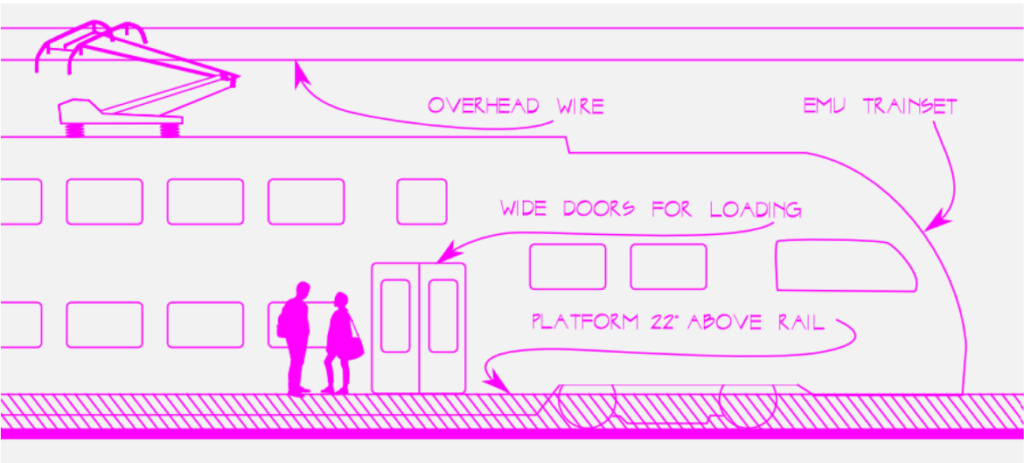New whitepaper outlines how to transform Southern California rail through electrification, level boarding, and through-running.

Southern California is a megaregion, with jobs, homes, and destinations spread across an area as large as some countries. Population has grown fastest far from city centers, leading to worsening traffic and the US’s dirtiest air, due to continued reliance on cars. The 405 freeway in Orange County is one of the nation’s most congested, while 8% of Riverside county drives more than 90 minutes a day. This gridlock is unsustainable in every sense of the word, and residents of diverse locations like Northern San Diego, Inland Empire, Santa Clarita Valley, Orange County and the City of Los Angeles need real alternatives – something faster than bus or light rail service.
The answer is modern, all-day, bidirectional electrified regional rail where services can top out at 125mph and operate in excess of 65mph. These are speeds that are competitive over distance with automobiles, especially when freeways are congested. Southern California’s Metrolink, COASTER and Pacific Surfliners are legacy commuter and intercity services that are in the process of shifting their business model to an all-day, bidirectional service, but have thus far resisted other elements of modern service like electrification and level boarding.
To this end, Californians for Electric Rail presents Electrolink: Modern Passenger Rail Service for Southern California. This vision, drawing on work from NYU Transit Costs Project, shows how modernization of the Southern California passenger rail unlocks metropolitan mobility in ways competitive with car travel.
Using the acceleration and speed benefits of electrification, the reduced dwell time of level boarding and through running service at Los Angeles Union Station and the San Diego Santa Fe Depot, Electrolink demonstrates how regional rail trip times can be reduced to levels equal or faster than driving. For example, these improvements would reduce travel times 20% between Santa Clarita and Downtown LA from 1hr10m to 57m, and between Oceanside and Downtown San Diego from 1hr1m to 45m. Critically, these interventions are much more affordable and less disruptive than efforts to increase top speeds for trains.
In addition to the vision, Electrolink recommends new paradigms for how regional rail in Southern California is governed, staffed, right-of-way managed and projects funded.
We launch this paper just short of the one year anniversary of both Caltrain’s debut of electrified service on the San Francisco Peninsula and the signing of AB 2503 (Asm. Alex Lee) that streamlined CEQA for rail electrification projects. Caltrain electrification has been a smashing success, with ridership increasing 76% in the year since electrification. Southern California can no longer afford to be on the sidelines for modern regional rail service.
0 Comments